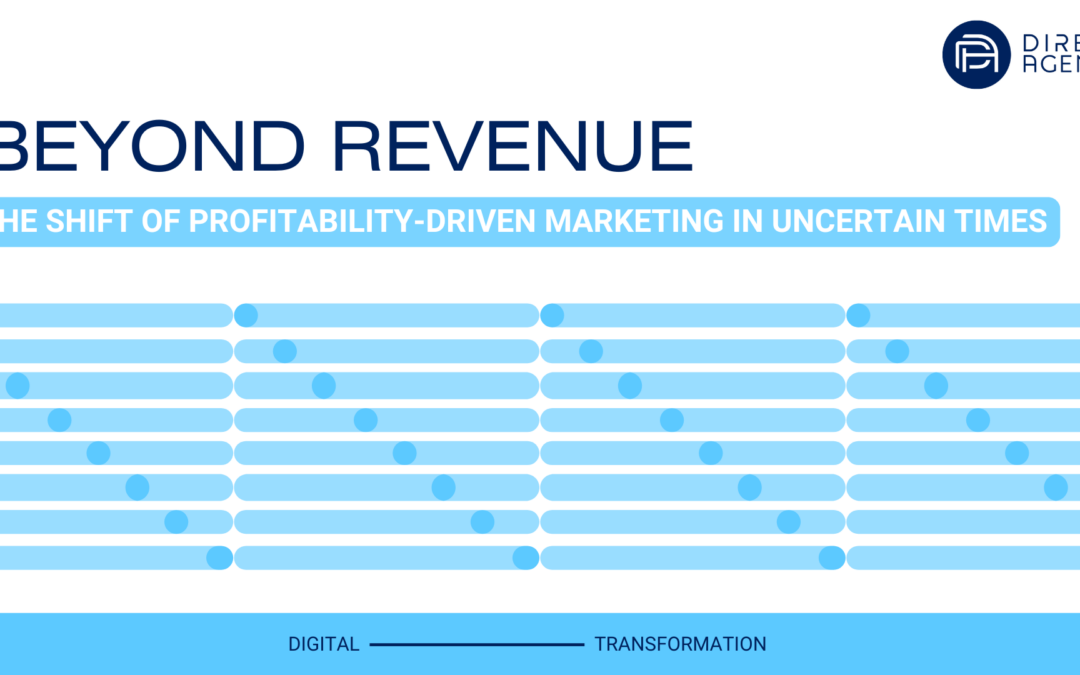In today’s challenging economic landscape, marketing leaders are pivoting from traditional revenue-focused metrics to more sophisticated profit-centered strategies. This fundamental shift is reshaping how organizations evaluate marketing success, allocate resources, and demonstrate value to executive leadership.
Why Traditional ROI Models Are No Longer Sufficient
- Intensified budget scrutiny as economic circumstances force organizations to justify every dollar spent
- Growing attribution complexity across increasingly fragmented customer journeys
- Significant measurement gaps that fail to capture the long-term impact of brand-building initiatives
- Rapid channel proliferation creating data silos and complicating holistic performance assessment
- Finance teams are demanding clearer evidence that marketing investments drive sustainable growth
The Critical Pivot from Revenue to Profit Orientation
Revenue-centered marketing approaches often lead organizations to acquire customers regardless of their long-term value, over-invest in high-volume but low-margin channels, and create a dangerous disconnection between marketing activities and company profitability.
Forward-thinking marketers are now asking more nuanced questions: “Did this campaign generate profitable revenue that exceeds our acquisition costs and serves our long-term business objectives? Are we attracting customers who will deliver sustainable value?”
Practical Approaches for Implementing Profit-Driven Marketing
- Develop Multi-Dimensional Success Metrics
- Create balanced scorecards that weigh multiple performance factors
- Integrate short-term revenue with customer acquisition costs
- Incorporate projected lifetime value and retention indicators
- Analyze margin contribution by segment and channel
- Embrace Advanced Mix Modeling Techniques
- Analyze diminishing returns curves to identify optimal spending levels
- Account for cross-channel interaction effects and attribution
- Include competitive and environmental variables in models
- Prioritize margin and profit indicators rather than just revenue metrics
- Implement Cohort-Based Performance Analysis
- Track cohort performance systematically over extended timeframes
- Compare acquisition costs against realized lifetime value
- Identify which channels and tactics produce higher-retention customers
- Calculate true payback periods for different marketing investments
- Segment analysis by customer profitability profiles
The Future of Marketing Measurement
As economic uncertainty persists, organizations that will thrive are those capable of precisely connecting marketing investments to profitable outcomes. This requires not just new metrics but a fundamental shift in mindset throughout the marketing organization:
- Transitioning from channel-centric to customer-centric measurement frameworks
- Focusing on incremental profit generation rather than gross revenue
- Balancing short-term performance indicators with long-term value creation
- Integrating marketing analytics with broader business intelligence systems
- Building cross-functional alignment around profitability objectives
Wrapping Up
The difference between marketing that merely survives and marketing that drives business growth comes down to measurement sophistication. By shifting focus from simple revenue metrics to comprehensive profitability analysis, marketing leaders can demonstrate their true value while optimizing resources for maximum impact.
This evolution requires new analytical capabilities and sometimes challenging conversations about long-held assumptions. However, marketing teams that embrace this profit-centered approach are positioning themselves not just as campaign executors but as strategic drivers of sustainable business growth in an increasingly complex marketplace.
Want to learn more about how we’re helping brands navigate these uncertain times? Let’s talk at [email protected]

